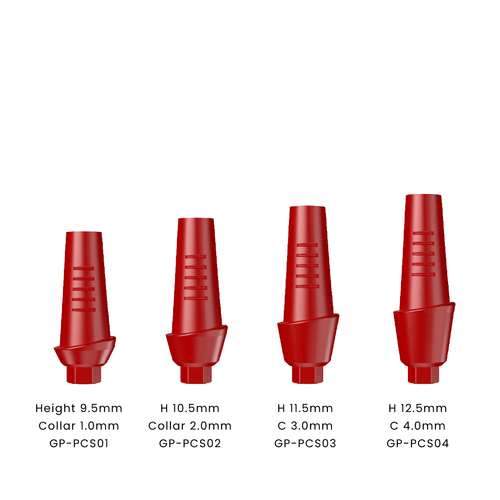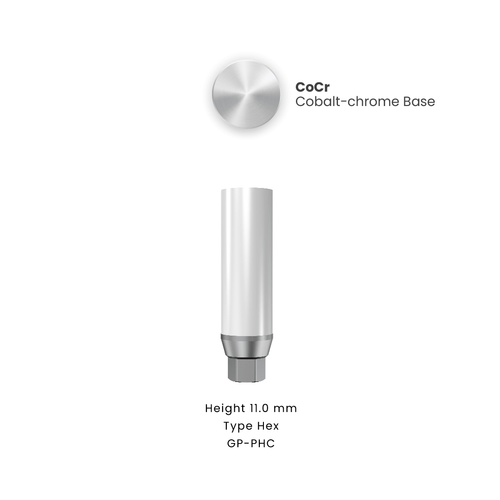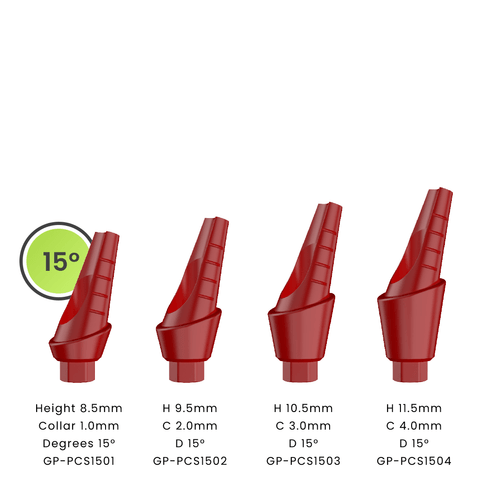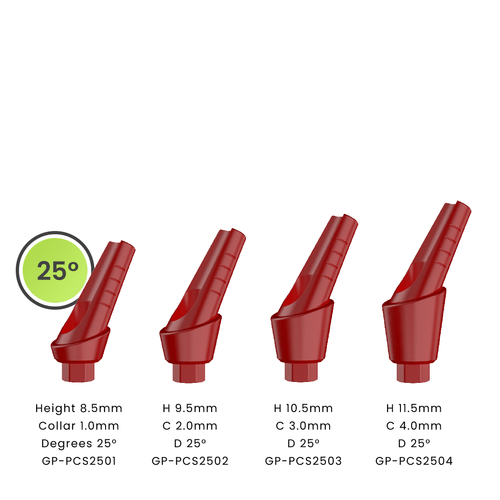CASTABLE ABUTMENTS
Plastic castable abutments are intended for use by the technician for simple casting of custom-made abutments for constructing the prosthetic restoration. Use this technique for a lab-fabricated, custom, screw-retained crown, or cement retained. The custom crown can complement soft tissue contour, height and also can correct angulation.
When to use
- Single and multiple-unit restorations
- For aesthetic restorations when tissue is limited
- Minimum inter-arch space of 4 mm
- Screw and cement retained restorations
- Mild or moderate implant malposition
How to use
- Make an implant level impression
- Lab process
- Pour the working model
- Seat, mark, and modify the abutment (seat the selected custom castable abutment onto the implant analog in the working model)
- Wax the custom abutment
- Sprue, invest and cast the abutment
- Divest, fit, and finish the abutment
- Apply the porcelain
- Seat the final restoration
- Check and modify the restoration and take radiograph along the long axis of the implant to ensure that the crown is seated completely in the hex of the implant.
- Tighten the abutment and screw (do not exceed 20 NCM, we recommend 15-20 NCM)
- Fill the screw and access channel
Clinical advantages
- It is easier to correct the angulation of implants
- The final restorations are manufactured to the patients exact gingival architecture, achieving an optimal emergence profile and a more esthetically pleasing outcome.
- Clinical alternative to mild or moderate implant malposition









